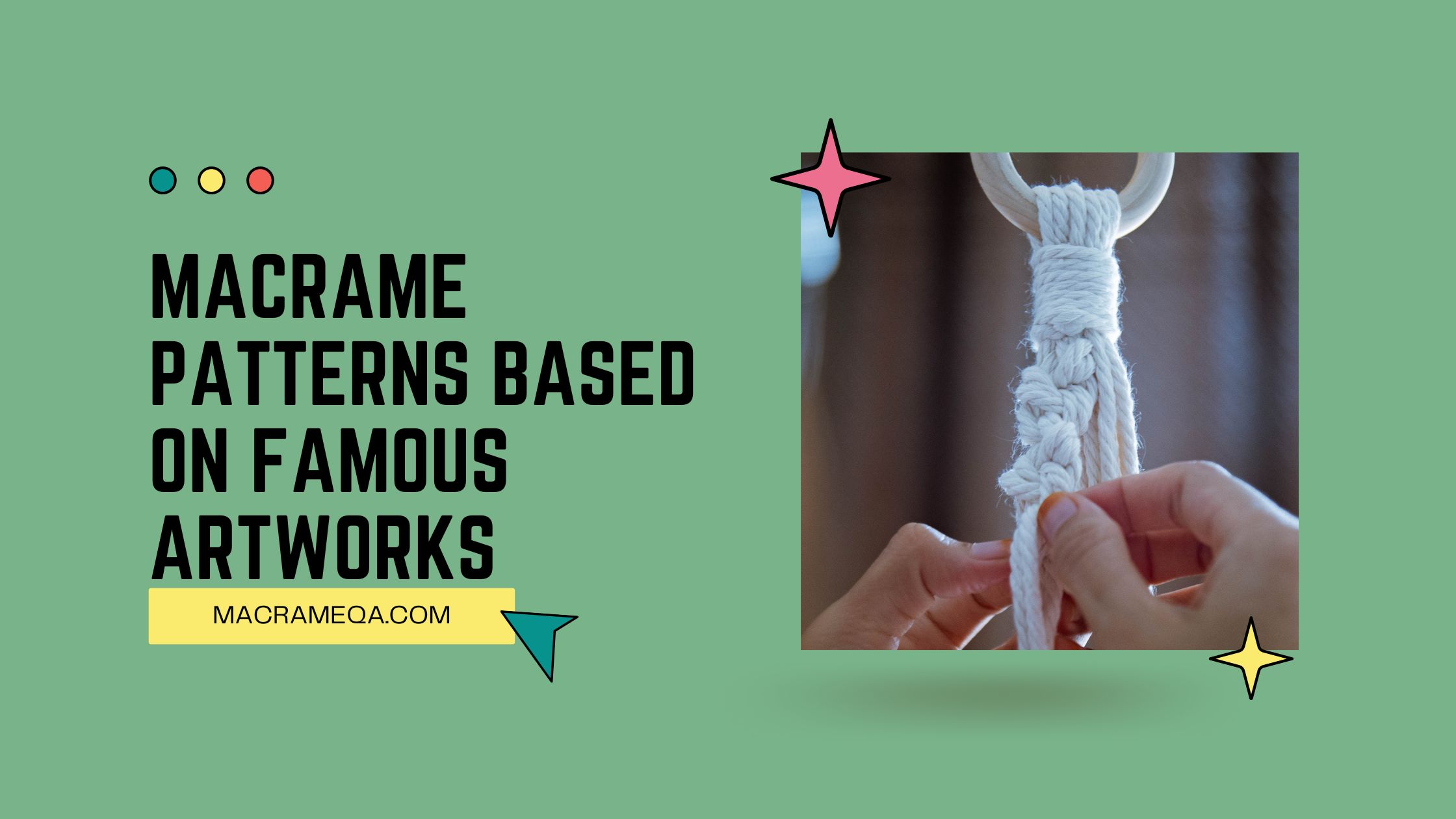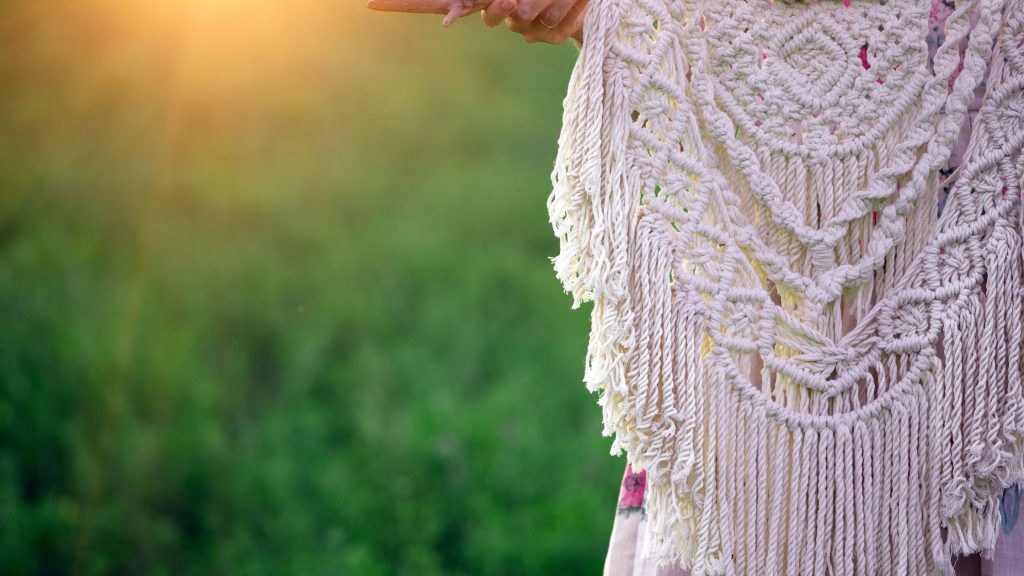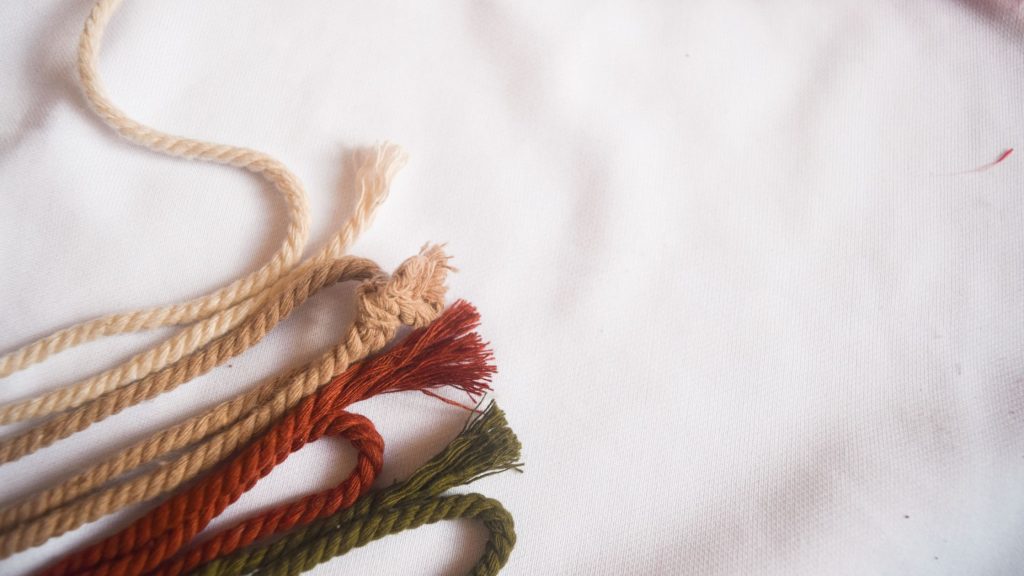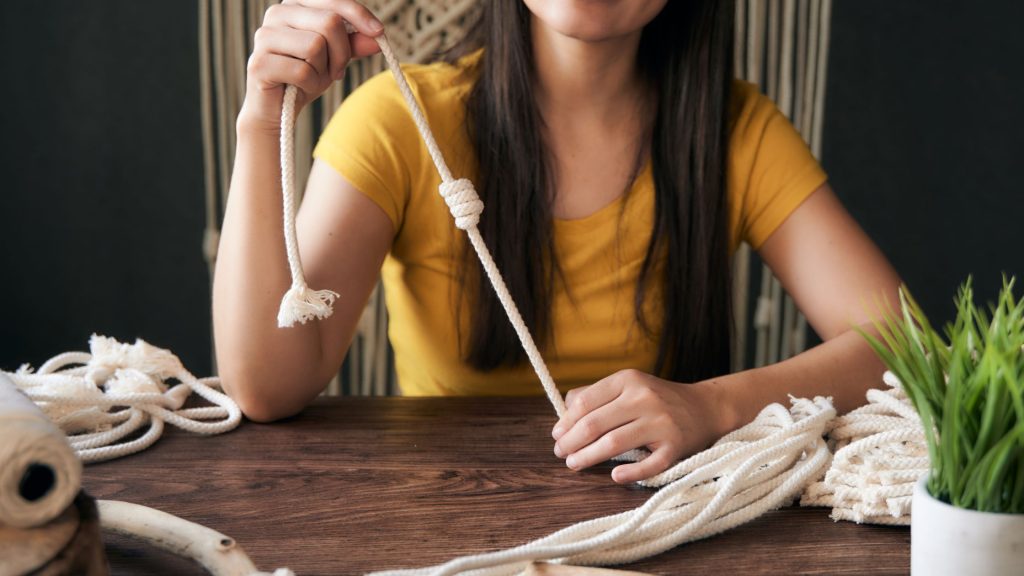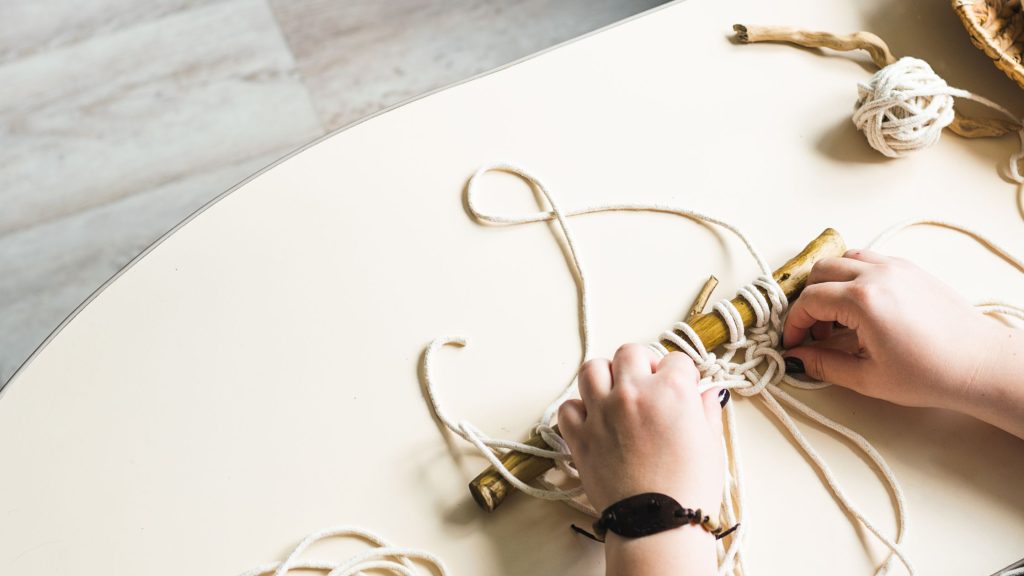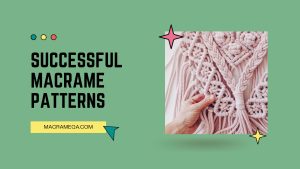Did you know that you can transform your macrame patterns based on famous artworks? From Van Gogh’s starry night to Picasso’s iconic cubist paintings, talented macrame artists have taken inspiration from renowned masterpieces to create unique and intricate designs. Whether you’re an art enthusiast or simply looking to add a touch of creativity to your macrame projects, these patterns allow you to bring the beauty of famous artworks into your own home. With their intricate knots and vibrant colors, these macrame creations are sure to be a conversation starter and a testament to your artistic flair.
What is macrame?
Macrame is a textile art form that involves knotting cords or threads to create intricate and decorative patterns. The word “macrame” is derived from the Arabic word “migramah,” meaning fringe. It has a rich history and has been practiced for centuries in various cultures around the world. Macrame can be used to create a wide range of items such as wall hangings, plant hangers, jewelry, and even clothing. The art of macrame allows for both creativity and relaxation, making it a popular craft among many individuals.
Definition of macrame
Macrame is a craft technique that involves using various knotting methods to create intricate patterns and designs. It is typically done using cords or threads made of natural materials such as cotton, hemp, or jute. The knots used in macrame can vary, but some of the most common ones include the square knot, half hitch knot, and double half hitch knot. These knots are combined in different ways and repeated to create unique patterns and textures.
History of macrame
The origins of macrame can be traced back to ancient times, with evidence of its practice in cultures like the Babylonians and Assyrians. However, it became particularly popular during the 17th and 18th centuries in Europe. Sailors would often use macrame to pass the time during long voyages, creating intricate knots and designs to decorate their ships. The craft then spread to other parts of the world, with each culture adding its own unique elements and techniques to the art form.
Popularity of macrame in modern times
In recent years, macrame has experienced a resurgence in popularity. This can be attributed to various factors, including the growing interest in handmade and sustainable crafts. Macrame offers a creative outlet that allows individuals to create unique and personalized pieces for their homes or as gifts. Its versatility and adaptability have also made it popular among interior designers, who appreciate its ability to add texture and visual interest to a space. Additionally, the rise of social media platforms has allowed for the sharing of macrame patterns and tutorials, further fueling its popularity and accessibility.
Famous artworks as inspiration for macrame patterns
Introduction
Using famous artworks as inspiration for macrame patterns is a creative way to combine the worlds of art and craft. By translating the elements and motifs of famous paintings into macrame knots and designs, individuals can create unique and visually striking pieces.
Why use famous artworks as inspiration?
Famous artworks are renowned for their beauty, complexity, and storytelling. They serve as a source of inspiration for many artists and craftspeople across different mediums. By drawing inspiration from these iconic works, macrame artists can add a new dimension to their creations and pay homage to the original artwork.
Examples of famous artworks that inspired macrame patterns
There are numerous famous artworks that have inspired macrame artists. Some examples include Van Gogh’s “Starry Night,” Da Vinci’s “Mona Lisa,” and Hokusai’s “The Great Wave off Kanagawa.” These artworks are known for their distinct visual elements, color palettes, and narratives, making them particularly well-suited for interpretation in macrame.
How to create macrame patterns based on famous artworks
Choose an artwork for inspiration
The first step in creating a macrame pattern based on a famous artwork is selecting a piece that resonates with you. Consider the visual elements, colors, and overall mood of the artwork. This will form the foundation of your macrame design.
Analyze the artwork
Once you have chosen an artwork, take the time to thoroughly analyze it. Study the composition, lines, and shapes used by the artist. Consider the story or message behind the artwork and how it can be translated into macrame form.
Identify key elements and motifs
Identify the key elements and motifs that define the artwork. This could include specific objects, characters, or patterns. These elements will serve as the basis for your macrame design and will help capture the essence of the original artwork.
Adapt the elements into macrame knots
Using your knowledge of macrame knots and techniques, adapt the identified elements and motifs into your design. Experiment with different knot combinations and textures to create a visually appealing representation of the artwork.
Select appropriate materials and colors
Choose materials and colors that complement the original artwork. Consider the texture and weight of the cords or threads, as well as the color palette used in the artwork. Selecting materials that reflect the style and mood of the artwork will enhance the overall aesthetic of your macrame piece.
Start creating the macrame pattern
Bring your design to life by starting the macrame process. Begin by gathering your materials and preparing the cords or threads. Follow the pattern you have created, knotting and weaving the cords to form the desired shapes and textures. Take your time and enjoy the process, allowing your creativity to guide you.
Tips for achieving accuracy and detail
Creating macrame patterns based on famous artworks requires attention to detail and precision. Here are some tips to help you achieve accuracy and detail in your macrame piece:
- Measure and mark your cords before starting to ensure consistent lengths.
- Use reference images of the original artwork to guide your knotting.
- Take breaks and step back to regularly assess your progress and make any necessary adjustments.
- Experiment with different knot tensions to achieve the desired level of detail.
- Practice patience and perseverance, as creating intricate macrame patterns can be time-consuming.
Benefits of creating macrame patterns based on famous artworks
Enhancing creativity and artistic skills
Creating macrame patterns based on famous artworks challenges your creativity and helps develop your artistic skills. It pushes you to think outside the box and find unique ways to translate visual elements into knot designs.
Honoring the original artwork
By using famous artworks as inspiration, you are paying tribute to the original artist and their masterpiece. It is a way of recognizing and appreciating their creativity while adding your own artistic interpretation.
Creating unique and personalized macrame pieces
Macrame patterns based on famous artworks allow you to create one-of-a-kind pieces that reflect your personal style and artistic vision. Each interpretation will have its own unique flair, making it a truly personalized macrame creation.
Exhibiting cultural appreciation
Choosing famous artworks from different cultures as inspiration can promote cultural appreciation and understanding. It provides an opportunity to explore different artistic traditions and celebrate their beauty through the art of macrame.
Adding a touch of elegance and sophistication
Macrame patterns based on famous artworks can elevate the aesthetic of a space or an outfit. They add a touch of elegance and sophistication, making a bold statement and becoming a conversation piece.
Popular famous artworks used in macrame patterns
Mona Lisa by Leonardo da Vinci
The enigmatic smile of Mona Lisa has inspired macrame artists to capture the iconic expression using intricate knotting techniques. The use of various shades of thread creates dimension and brings the renowned painting to life.
The Starry Night by Vincent van Gogh
With its swirling sky and vibrant colors, “The Starry Night” lends itself well to macrame interpretations. Macrame artists often focus on recreating the fluid lines and expressive brushstrokes of the painting, using knot patterns to mimic the movement of the celestial scene.
The Scream by Edvard Munch
“The Scream” is known for its haunting and chaotic depiction of inner turmoil. Macrame artists use the angular lines and bold color palette of the painting to create macrame patterns that convey a similar sense of unease and intensity.
The Persistence of Memory by Salvador Dali
Dali’s surreal masterpiece, “The Persistence of Memory,” has inspired macrame artists to create abstract and whimsical designs. The melting clocks and dreamlike imagery are translated into macrame knots that evoke the same sense of wonder and intrigue.
The Great Wave off Kanagawa by Katsushika Hokusai
The powerful waves of Hokusai’s woodblock print, “The Great Wave off Kanagawa,” have been beautifully translated into macrame patterns. Macrame artists explore different knot techniques and textures to recreate the dynamic movement and iconic shape of the wave.
The Birth of Venus by Sandro Botticelli
“The Birth of Venus” is one of the most famous artworks of the Renaissance period. Macrame artists draw inspiration from the graceful figure of Venus emerging from the sea, using knot patterns to represent the flowing waves and delicate drapery.
Guernica by Pablo Picasso
Picasso’s powerful anti-war painting, “Guernica,” has become a symbol of protest and resilience. Macrame interpretations of this artwork focus on capturing the fragmented and chaotic composition, using knots to represent the shattered forms and emotional intensity.
The Last Supper by Leonardo da Vinci
The iconic composition of “The Last Supper” has inspired macrame artists to recreate the intricate arrangement of the disciples and capture the emotional depth of the scene. Knot patterns are used to portray the figures and their expressions, creating a visually stunning macrame representation.
Girl with a Pearl Earring by Johannes Vermeer
The enigmatic beauty of the “Girl with a Pearl Earring” has captivated artists for centuries. Macrame interpretations of this painting often focus on recreating the luminosity of the pearl and the softness of the girl’s face, using different knotting techniques to achieve texture and depth.
The Creation of Adam by Michelangelo
“The Creation of Adam” is a masterpiece from Michelangelo’s Sistine Chapel ceiling frescoes. Macrame artists are inspired by the iconic outstretched hands and the sense of divine connection portrayed in the painting. Knot patterns are used to represent the figures and their surrounding celestial energy.
How macrame patterns based on famous artworks are used
Home decor
Macrame patterns based on famous artworks can be used as unique and eye-catching pieces of home decor. They can be displayed as wall hangings, curtains, or statement pieces that add a touch of artistic elegance to any room. The intricate patterns and textures of these macrame pieces create a focal point and conversation starter for visitors.
Fashion accessories
Macrame patterns inspired by famous artworks can also be used to create fashionable accessories. Bracelets, necklaces, or earrings featuring macrame patterns that draw elements from iconic paintings can add a stylish and artistic touch to any outfit. These wearable artworks allow individuals to showcase their love for both macrame and art.
Art exhibitions and galleries
Macrame patterns based on famous artworks can be showcased in art exhibitions and galleries. These unique interpretations of well-known paintings add a new dimension to the exhibition, incorporating the art of macrame into the traditional art world. This merging of different artistic mediums creates a visually captivating experience for viewers.
Challenges of creating macrame patterns based on famous artworks
Maintaining the integrity of the original artwork
One of the main challenges of creating macrame patterns based on famous artworks is ensuring that the essence and integrity of the original artwork are maintained. It can be difficult to capture the intricate details and nuances of a painting through macrame knots. Artists must strike a balance between capturing the essence of the original artwork while adding their own unique interpretation.
Scaling down complex artworks
Many famous artworks are complex and detailed, making it challenging to translate them into smaller macrame designs. Scaling down the patterns while maintaining the essence of the artwork requires careful consideration and planning. Simplifying certain elements or focusing on key motifs can help overcome this challenge.
Choosing the right macrame technique
There are various macrame techniques and knots to choose from when creating patterns based on famous artworks. Selecting the right techniques that best represent the visual elements and textures of the artwork can be a challenge. Macrame artists must experiment with different knots and textures to find the technique that best brings their interpretation to life.
Color selection and material compatibility
Matching the colors of the original artwork can be challenging when working with different materials and textures in macrame. Macrame artists must carefully select cords or threads that accurately represent the color palette of the painting. Additionally, ensuring that the chosen materials are compatible and create the desired texture and drape is essential for a successful macrame piece.
Ensuring the durability of the macrame piece
Macrame patterns based on famous artworks may require intricate and delicate knotting techniques. Ensuring the durability of the macrame piece while maintaining the desired aesthetic can be challenging. Macrame artists must consider the strength and longevity of their knots, choosing appropriate materials that withstand the test of time.
Finding macrame patterns based on famous artworks
Online platforms and websites
There are numerous online platforms and websites dedicated to macrame that provide a wide range of patterns, including those based on famous artworks. These platforms often include tutorials, step-by-step instructions, and visual guides for creating macrame patterns inspired by iconic paintings.
Books and publications
Books and publications focused on macrame often feature patterns and designs that are inspired by famous artworks. These resources can provide in-depth information, inspiration, and guidance for creating macrame patterns that pay homage to renowned paintings. They often include visual references and instructions to help artists bring their interpretation to life.
Macrame workshops and classes
Attending macrame workshops and classes is another excellent way to discover macrame patterns based on famous artworks. Instructors and experienced macrame artists often share their techniques and insights, including the process of adapting famous paintings into macrame designs. These workshops provide hands-on guidance and offer a space for creativity and learning.
Conclusion
Macrame patterns based on famous artworks offer a unique way to combine creativity, art, and craft. By drawing inspiration from iconic paintings, macrame artists can create visually stunning and personalized pieces that honor the original art while showcasing their own artistic vision. The popularity of macrame and the accessibility of online resources and tutorials have made it easier than ever to explore and experiment with famous artwork-inspired macrame patterns.
Whether used as home decor, fashion accessories, or showcased in exhibitions, macrame pieces based on famous artworks add a touch of elegance, creativity, and cultural appreciation to any setting. So why not dive into the world of macrame and bring your favorite masterpieces to life through knots and threads? The possibilities are truly endless!

